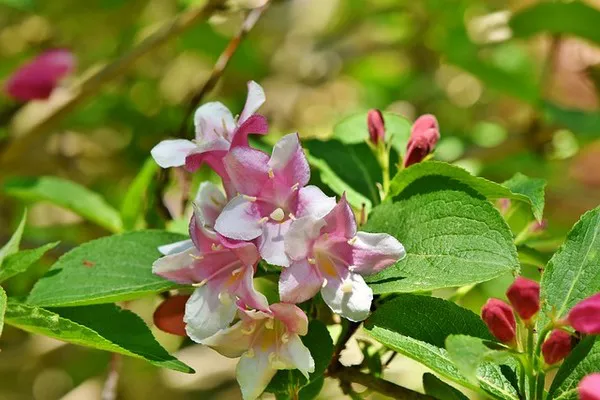When you come across a rhododendron in your garden or during a leisurely afternoon walk, you might perceive it as a colorful and aesthetically pleasing shrub. However, the story of rhododendrons is far more complex and intriguing than you might think, intertwined with ancient history, poison, medicine, and folklore.
Rhododendrons, comprising approximately 1,000 species, are a diverse group of plants ranging from deciduous to evergreen, from towering trees to creeping dwarf shrubs. They boast leaves spanning from a mere centimeter to a foot in length and bear flowers in an array of shades, including white, yellow, orange, pink, red, and purple. Interestingly, modern DNA-based research has revealed that all “azaleas” are, in fact, a subset of the rhododendron genus.
What makes rhododendrons even more captivating is their ancient legacy. Fossil evidence of rhododendrons dates back as far as 60 million years ago, predating the formation of the Himalayan mountain range by about 10 million years. While approximately half of rhododendron species are unique to the Himalayas, suggesting they grow nowhere else, the genus itself did not originate in this region.
Over the course of 60 million years, rhododendrons dispersed across the Northern Hemisphere, thriving in various ecosystems, from boreal woods and lofty mountains to tropical rainforests. Some species even adopted an epiphytic lifestyle, perching on high branches. Their journey led them to North America, Japan, Europe, Asia, and even Australia. Remarkably, rhododendrons were once native to the British Isles before the last ice ages forced them out.
The Himalayan mountain ranges, with their complex topography and valleys, contributed to the extraordinary diversity of rhododendrons. Populations of rhododendrons became isolated from one another, fostering the evolution of numerous distinct species. Tourists flock to regions like Yunnan and the Baili areas of China to witness the vibrant blooms that resulted from this diversity.
One of the most intriguing features of rhododendrons is their method of pollination. Rhododendron pollen possesses microscopic tentacles that make it adhesive. When triggered by the buzzing of insects, pollen shoots out from the stamens like strings from a party popper, clinging to the bodies of pollinators.
It is important to note that the label of “invasive” cannot be applied to all rhododendron species. Only one out of over a thousand—the notorious Rhododendron ponticum—holds this reputation. Left unchecked, Rhododendron ponticum can dominate its habitat, crowding out other plant life. However, other rhododendron species do not exhibit such invasive behavior.
The history of humanity’s interaction with rhododendrons goes far beyond their horticultural appeal and the ongoing battle against Rhododendron ponticum in the wetter regions of Britain. Rhododendrons have been employed to address a wide array of ailments, from common colds and diarrhea to leprosy and sexually transmitted diseases, as well as issues like low libido and pig diseases. Most of these remedies lack scientific validation.
In Labrador, Canada, locals often consume infusions made from the native rhododendron, claiming various health benefits, although scientific evidence remains limited.
Like many medicinal plants, some rhododendrons contain toxins and should not be ingested. Certain species, including the common yellow azalea, contain nectar toxins that can induce illness and unpleasant experiences in humans.
Rhododendrons also play a role in the curious phenomenon known as “mad honey disease.” In specific regions worldwide, including Turkey, consuming raw honey can lead to this condition. Bees gather nectar from rhododendron flowers during particular times of the year, resulting in honey with toxic properties. The symptoms of “mad honey disease” were recorded as far back as 400 BC by the Greek historian Xenophon. In more recent history, around 2010, an incident occurred in Scotland when a photographer ingested two tiny drips of nectar from his hand at a botanical garden. He experienced temporary effects but ultimately recovered.
Moreover, rhododendrons are toxic to farm animals, causing paralysis and eventual death if the leaves are consumed. However, an antidote, black tea, can counteract their effects.
Interestingly, rhododendrons have even led to peculiar tales and folklore. In some Chinese stories, herds of cattle became intoxicated after witnessing the splendid red rhododendron flowers in the Baili scenic area. However, this story likely originated from the unfamiliarity of the animals with the shrub, rather than its intoxicating effects.
The rich cultural history of rhododendrons extends to western China, where these plants feature prominently in myths and legends. These narratives often carry tragic undertones. For instance, one legend involves star-crossed lovers who transform into Dujuan birds, which fly and cry tears of blood, ultimately becoming rhododendron plants. In the Dongba religion of the Naxi people in the Himalayan foothills of Yunnan, three colossal rhododendrons guard the entrance to the realm of the deceased. The faith also attributes swords and armor crafted from rhododendron plants to epic battles that shaped their world.
Even in Western literature, rhododendrons make appearances. Daphne du Maurier’s 1938 Gothic thriller “Rebecca” evokes the spirit of the title character through the imagery of “massed red rhododendrons.”
The next time you encounter a rhododendron, you might view it through a new lens, appreciating the depth of its history and the multifaceted role it has played in human culture and biology.


